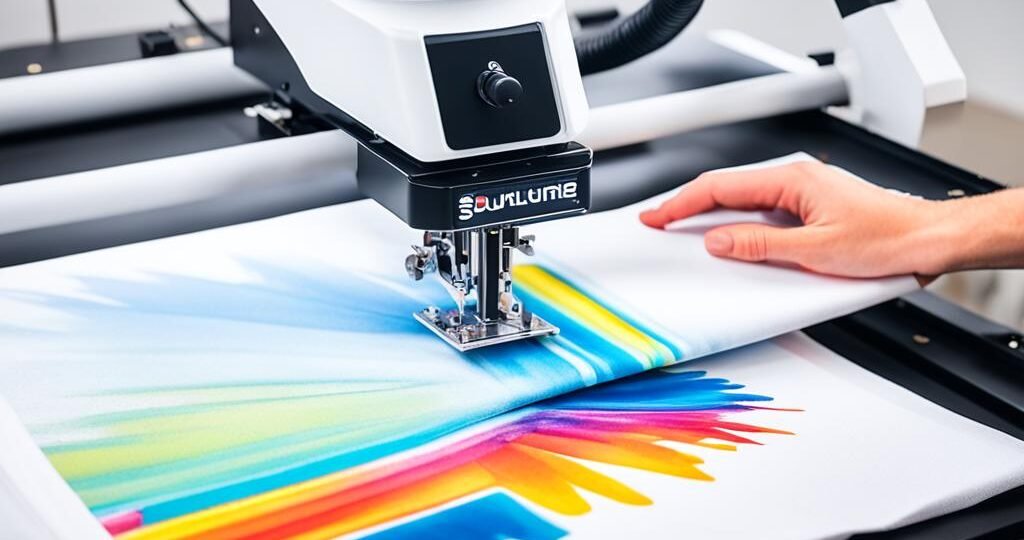
In our studio, the air is filled with creativity and passion. It’s a space where we can escape the outside world and immerse ourselves in the power of art. But behind the vibrant brushstrokes and ethereal melodies, we face our own demons.
My husband fights a daily battle with mental illness. Agoraphobia, anxiety, and depression are his constant companions, always lurking in the shadows. These conditions, like fierce dragons, threaten to consume him. But with love and art as our weapons, we face them head-on. Through the highs and lows, we find strength in each other and in the sanctuary of our shared creativity.
Meanwhile, I navigate life with the challenges of osteoporosis and COPD. These physical limitations can be debilitating, casting a shadow over my every step. But within the confines of our art, I find solace and expression. Our brushes and instruments become extensions of our souls, allowing us to transform our challenges into something beautiful.
Together, we have learned resilience. Our battles aren’t just fought with the body but with the spirit. Every day is a reminder that even in the face of adversity, we can find light and strength through our art.
Key Takeaways:
- Our studio is a sanctuary where we face our dragons, mental illness, and physical challenges.
- Love and art are our weapons in battling these challenges.
- Resilience is learned through the daily battles we face.
- In our art, we find solace, expression, and beauty.
- Together, we discover light and strength through our shared journey.
Support us at www.devilndove.com or our store.
Understanding Heat Transfer Printing Process
Heat transfer printing, also known as digital transfer, is a versatile decoration method that allows you to create custom designs on various materials. This process involves printing your design onto transfer paper and then transferring the ink onto fabric using heat and pressure. Understanding the heat transfer printing process is essential for achieving successful sublimation heat press results.
There are several techniques available for heat transfer printing:
- Inkjet transfers: This method uses inkjet printers to transfer the design onto the transfer paper. It works well for full-color designs and allows for intricate details.
- Dye sublimation transfers: With this technique, designs are printed onto special sublimation transfer paper using sublimation inks. The ink turns into a gas when heated, allowing it to transfer onto the fabric and creating vibrant, durable prints. Dye sublimation is ideal for synthetic materials like polyester.
- Digital appliqué transfers: This method involves printing the design onto a heat transfer vinyl, which is then cut out and transferred onto the fabric. It’s a popular choice for creating textured and layered designs.
- Vinyl transfers: Vinyl transfers use heat transfer vinyl sheets to create designs that are cut out and pressed onto the fabric. It offers a wide range of colors and finishes, including glitter, holographic, and metallic.
Each technique has its advantages and is suitable for different applications. Choosing the right heat transfer method depends on factors such as the complexity of the design, the fabric type, and the desired outcome.
In understanding the heat transfer printing process, you gain the ability to create personalized and high-quality prints on a variety of materials.
When to use heat transfer printing
Heat transfer printing is a popular choice for customizing apparel, accessories, and promotional items. It offers versatility and the ability to produce detailed designs with vibrant colors. Here are some situations where heat transfer printing is commonly used:
- Creating custom t-shirts, hoodies, and other garments
- Personalizing bags, hats, and other accessories
- Producing promotional items like mousepads, mugs, and keychains
- Designing team uniforms and jerseys
- Printing logos and graphics for businesses
Heat transfer printing provides endless possibilities for customization and branding.
Choosing the right technique
Choosing the right heat transfer technique depends on several factors:
- The fabric type: Different techniques work better on specific fabrics. For example, dye sublimation works best on polyester, while vinyl transfers can be used on a wide range of materials.
- Design complexity: Some techniques, like inkjet transfers, are better suited for intricate and detailed designs, while others, like vinyl transfers, are great for simple and bold graphics.
- Quantity: If you need to produce a large number of prints, some techniques may be more efficient and cost-effective than others.
- Finish and durability: Consider the desired finish and longevity of the print. Dye sublimation, for instance, offers excellent color vibrancy and durability.
By understanding the different heat transfer techniques and their capabilities, you can choose the one that best suits your specific project or application.
Now that you have a better understanding of the heat transfer printing process and the various techniques available, you can start exploring the world of sublimation heat press techniques and unleash your creativity with personalized designs and prints.
Support us at www.devilndove.com or our store at www.devilndove.online.
Steps for Custom Heat Transfer Printing
In order to achieve professional results with custom heat transfer printing, it is important to follow a series of steps. These steps include acquiring the necessary supplies, creating and printing your design, cutting out the design if necessary, warming up the heat press machine, adjusting the pressure and setting the time, placing the substrate and transfer in place, pressing the product, and finally, removing the film. Each step requires careful attention to detail and proper technique to ensure accurate and durable sublimation heat press prints.
Let’s dive deeper into each step:
- Acquire necessary supplies: Before you begin the heat transfer printing process, make sure you have all the required supplies, including heat transfer paper, sublimation ink, a heat press machine, and the substrate you will be printing on.
- Create and print your design: Use graphic design software to create your desired design. Once the design is ready, print it using a printer suitable for heat press applications. Make sure to use the appropriate type of ink for your specific heat transfer method.
- Cut out the design: If necessary, carefully cut out the design using scissors or a cutting machine. This step is important for ensuring precise placement of the design on the substrate.
- Warm up the heat press machine: Preheat your heat press machine to the recommended temperature for your specific heat transfer method. This step ensures proper adhesion of the design to the substrate.
- Adjust the pressure and set the time: Depending on the thickness of the substrate and the type of heat transfer method you are using, adjust the pressure and set the time accordingly on your heat press machine. This will ensure proper transfer of the design onto the substrate.
- Place the substrate and transfer in place: Position the substrate on the lower platen of the heat press machine and place the transfer paper with the design facing down on top of the substrate. Make sure the design is properly aligned and centered.
- Press the product: Close the heat press machine and apply pressure according to the manufacturer’s guidelines. The combination of heat and pressure will activate the transfer process, allowing the ink to adhere to the substrate.
- Remove the film: Once the designated time has elapsed, open the heat press machine and carefully remove the transfer paper from the substrate. Be cautious not to smudge or damage the design during this step.
Following these steps will help you achieve professional results with custom heat transfer printing. However, in case you encounter any issues or challenges during the process, here are a few tips and troubleshooting advice to help you navigate sublimation heat press printing:
- Tips for sublimation transfer: Ensure that your design is properly sized to fit the substrate, use high-quality heat transfer paper, and conduct a test print before transferring onto the final substrate.
- Troubleshooting common issues: If you experience issues such as incomplete or faded transfers, uneven pressure, or color bleeding, check the temperature, time, and pressure settings on your heat press machine, use high-quality materials, and ensure proper alignment and placement of the design.
By following these steps and implementing the provided tips and troubleshooting advice, you can master the art of custom heat transfer printing and create stunning, personalized prints on a wide range of substrates.
Support us at www.devilndove.com or our store at www.devilndove.online.
Equipment and Supplies Needed for Heat Transfer Printing
To achieve optimal results in heat transfer printing, it is essential to have the right equipment and supplies. Here is a comprehensive list of what you’ll need:
1. Computer with Graphic Design Software
A computer equipped with graphic design software is crucial for creating custom designs for your prints. Whether you prefer Adobe Photoshop, CorelDRAW, or another program, make sure you have the necessary tools to unleash your creativity.
2. Printer for Heat Press Applications
Invest in a printer capable of handling heat press applications. Look for a printer that provides high-quality prints and is compatible with heat transfer paper. Choose between inkjet ink, pigment ink, or sublimation ink, depending on the finish you desire for your prints.
3. Heat Transfer Paper
Choose heat transfer paper that is specially coated with a wax and pigment polymer film. This type of paper ensures that the ink adheres properly to the substrate during the heat transfer process. It is available for both light and dark garments.
4. Cutter for Trimming Designs
A cutter is necessary for trimming your designs to the desired shape and size. This tool ensures clean and precise cuts, giving your prints a professional finish.
5. Heat Press Machine
Invest in a heat press machine suitable for your specific needs. Whether you require a small machine for personal use or a larger one for commercial production, there are various shapes and sizes available on the market. Consider factors such as temperature control, pressure adjustment, and even heat distribution when making your decision.
6. Heat Pads, Heat Tape, and Heat Resistant Sheeting
Use heat pads on the bottom platen of your heat press to ensure even and consistent heat distribution. Heat tape is essential for securing the heat transfer paper in place, preventing it from sliding during the pressing process. Additionally, use heat-resistant sheeting to protect the press from any ink residue or damage.
7. Substrate for Printing Onto
Select the appropriate substrate for your prints, such as t-shirts, sweatshirts, or bags. Ensure that your chosen substrate is suitable for heat transfer printing and can withstand the temperature and pressure applied during the heat press process.
Setting up a sublimation heat press workspace requires careful consideration of these equipment and supplies. With the right tools in hand, you’ll be ready to embark on your heat transfer printing journey and create stunning custom prints.
Support us at www.devilndove.com or our store at www.devilndove.online.
Choosing the Right Printers and Transfer Paper for Heat Transfer Printing
When it comes to heat transfer printing, selecting the appropriate printers and transfer paper is crucial for achieving optimal results. Different methods, such as inkjet transfers and dye sublimation transfers, offer their own advantages in creating custom prints. Additionally, the direct to garment (DTG) technique and heat press printing provide unique options for personalization. To ensure the desired outcome, it is important to choose the right transfer paper for light or dark garments. Light transfer paper is ideal for pastel and light-colored fabrics, while dark transfer paper is suitable for darker materials. Having a good understanding of printer compatibility and transfer paper options will allow you to make informed decisions to produce high-quality sublimation heat press prints.
Support us at www.devilndove.com or our store at www.devilndove.online.
Different Types of T-Shirt Printing Methods
T-shirt printing methods offer a range of techniques and equipment to create custom designs. Whether you’re looking to print t-shirts for a personal project or a business, it’s important to understand the various options available. Here, we’ll explore some popular t-shirt printing methods:
Screen Printing
Screen printing is a traditional and versatile method known for its durability. It involves using a stencil (or screen) to transfer ink onto the fabric. Screen printing is ideal for large-scale production and offers vibrant colors and long-lasting prints. However, it can be time-consuming and requires specialized equipment.
Dye Sublimation
Dye sublimation is a heat transfer process that uses special ink to create vibrant, full-color prints. The design is printed onto transfer paper and then transferred onto the fabric using heat and pressure. Dye sublimation is perfect for intricate designs and offers a soft, breathable finish. It works best on light-colored synthetic fabrics.
Direct to Garment (DTG) Printing
DTG printing allows you to print full-color designs directly onto the fabric using a specialized inkjet printer. This method enables high-quality prints with intricate details and a soft feel. It’s suitable for small-batch or one-off prints, and works well on both light and dark-colored garments.
Heat Press Printing
Heat press printing involves transferring a design onto the fabric using a combination of heat and pressure. It can be used with various techniques, including digital transfers, vinyl cutting, and sublimation transfers. Heat press printing is versatile and offers great durability. It allows for fast production times and is suitable for both small and large orders.
Vinyl Cutting
Vinyl cutting involves cutting designs out of vinyl material and then heat pressing them onto the fabric. This method offers a wide range of colors and finishes, including metallic and glitter options. It works well for small orders or personalized designs.
Hand Painting, Spray Painting, and Airbrushing
If you prefer a more artistic approach, hand painting, spray painting, and airbrushing techniques allow for unique and custom designs. These methods offer complete creative freedom and can be used on a variety of fabrics. However, they require skill and expertise to achieve professional results.
Understanding the different types of t-shirt printing methods is essential for choosing the right technique for your specific needs. Whether you prioritize durability, vibrant colors, intricate designs, or artistic freedom, there’s a printing method that suits your requirements.
Support us at www.devilndove.com or our store at www.devilndove.online.
Conclusion
Sublimation heat press techniques offer a world of possibilities when it comes to creating custom prints on various materials. By understanding the heat transfer printing process and acquiring the necessary equipment and supplies, you can achieve professional results that will impress. Whether you prefer screen printing, dye sublimation, direct to garment (DTG) printing, or heat press printing, each method has its own unique advantages and considerations.
With practice and experimentation, you can unleash the full potential of sublimation heat press techniques and create stunning custom prints that truly stand out. So, don’t be afraid to explore the possibilities and let your creativity run wild. From personalized designs on t-shirts and bags to vibrant prints on mugs and phone cases, sublimation heat press techniques allow you to turn your creative ideas into reality.
Remember, mastering sublimation heat press techniques takes time, patience, and a willingness to learn. Start small, familiarize yourself with the process, and gradually expand your skills. Don’t be afraid to try new techniques or experiment with different materials. The more you practice, the better you will become at achieving professional results with sublimation heat press techniques.
So why wait? Start your sublimation heat press journey today and discover the endless possibilities it holds. Visit our website at www.devilndove.com or check out our online store at www.devilndove.online for all your sublimation heat press needs. Happy printing!
FAQ
What is heat transfer printing?
Heat transfer printing is a decoration method that involves transferring a custom design from transfer paper onto fabric using heat and pressure.
What are the steps involved in custom heat transfer printing?
The steps for custom heat transfer printing include acquiring necessary supplies, creating and printing the design, cutting out the design if necessary, warming up the heat press machine, adjusting pressure and setting the time, placing the substrate and transfer in place, pressing the product, and removing the film.
What equipment and supplies are needed for heat transfer printing?
The equipment and supplies needed for heat transfer printing include a computer with graphic design software, a printer capable of handling heat press applications, inkjet ink or sublimation ink, heat transfer paper, a cutter, a heat press machine, heat pads, heat tape, heat resistant sheeting, and substrates such as t-shirts or bags.
How do I choose the right printers and transfer paper for heat transfer printing?
It is important to choose printers and transfer paper that are compatible with the desired printing technique and fabric type. Inkjet transfers and dye sublimation transfers are popular methods, and light transfer paper is used for light-colored garments while dark transfer paper is used for darker fabrics.
What are the different types of t-shirt printing methods?
The different types of t-shirt printing methods include screen printing, dye sublimation, direct to garment (DTG) printing, heat press printing, vinyl cutting, and hand painting methods such as spray painting and airbrushing.
Source Links
RELATED POSTS
View all



